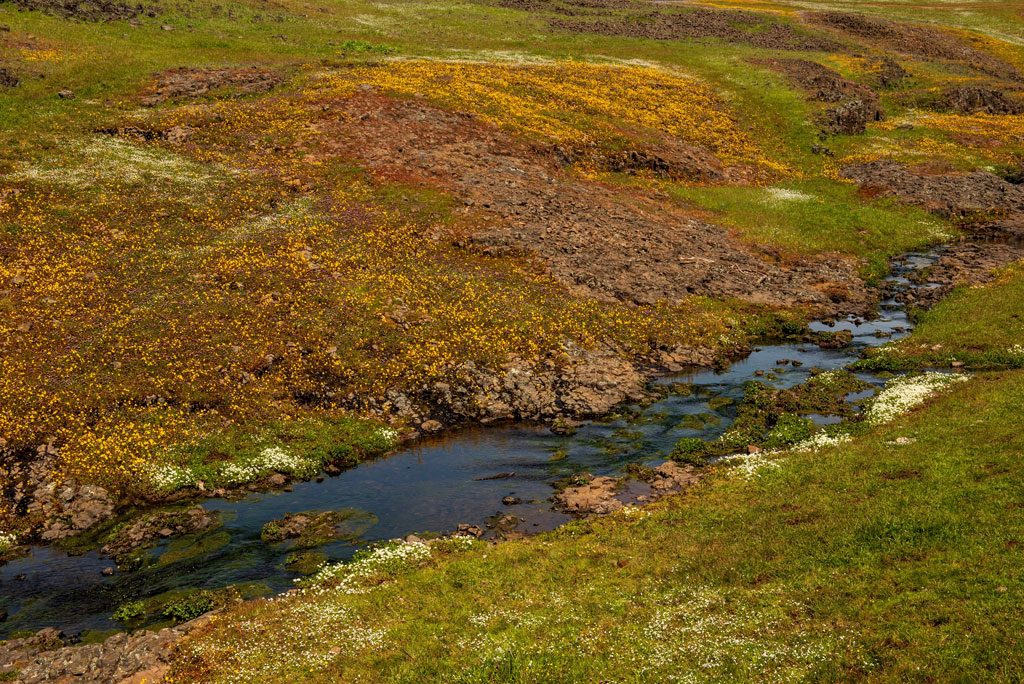California Native Grasses

California Fescue Festuca californica
It is a species of grass known by the common name California fescue. It is native to the states of California and Oregon where it is a member of many plant communities, including chaparral. This fescue is a clumping perennial without rhizomes. It reaches anywhere from 40 to 120 centimeters in height. The rough leaves are narrow but can be quite long. The flower cluster holds spikelets which are each one to two centimeters long. The plant reproduces from seed and from buds located at the base.
Purple Needlegrass Stipa pulchra
Purple needlegrass or purple stipa is native to California, where it occurs throughout the coastal hills, valleys, and mountain ranges, as well as the Sacramento Valley and parts of the Sierra Nevada foothills, and Baja California. It grows in many types of local habitats, including grassland, chaparral, and oak woodland. It grows well on clay and serpentine soils. It is a perennial grass producing tufts of erect, unbranched stems up to a meter tall. The extensive root system can reach 20 feet deep.
Idaho Fescue Festuca idahoensis
Idaho Fescue or Blue bunchgrass is native to western North America, where it is widespread and very common. In California it is most often found in the Coast Ranges and foothills of the Sierra (in the Sierra, generally at 4000 ft and above). It can be found in many ecosystems, from shady forests to open plains grasslands. This fescue is a densely-clumping long-lived perennial grass with stems from about 30 to 80 centimeters in height.
Red Fescue Festuca rubra
Red Fescue is one of many species of Festuca native to California. It is a cool-season species of bunch grass (summer dormant) that is found worldwide and can tolerate many habitats and climates. It is a nutritious and palatable forage grass for domestic and wild animals. It is used as a turfgrass and groundcover and can be left completely unmowed for a lush prairie-like look. It spreads by rhizomes. There are three recognized subspecies, and many cultivars have been bred.
Needle Grass Stipa cernua
Nodding Needle Grass (Nassella cernua) is a native grass that grows in many parts of California, primarily in the Coast Ranges from Tehama County southward at elevations from sea level to 5,000 ft. It is fast growing and moderately long-lived. It grows in an upright form to a height of 3 feet, with active growth during the spring. Leaves are medium green and deciduous. There have been some taxonomic changes related to this genus (Needlegrass) over the years.
Junegrass Koeleria macrantha
Koeleria macrantha is a species in the Poaceae (Grass) family known by the common name Junegrass. It is native to much of North America, from Alaska to northern Mexico to the eastern United States. In California it is found from the coast to the mountains but is largely absent from the deserts and central valley. It occurs in a large number of habitat types, especially prairie. This is a short, tuft-forming perennial bunchgrass, reaching heights from 20 to 70 centimeters.
Thingrass Agrostis pallens
Agrostis pallens is a species of grass known by the common name seashore bent grass. It is native to western North America from British Columbia to Montana to California, where it grows in many types of habitats. In California it is widespread except for the central valley and deserts. It is a perennial grass growing 10 to 70 centimeters in height, sometimes from a rhizome. The leaves vary in width and length but are generally not more than 5 centimeters long. The flower cluster is a narrow arra…
Hairgrass Deschampsia elongata
Deschampsia elongata is a species of grass known by the common name slender hairgrass. It is native to western North America from Alaska to Wyoming to northern Mexico, and South America in Chile. It grows at all elevations, often in moist areas. It is a perennial grass forming dense clumps sometimes exceeding a meter in height. Most of the leaves are located in a tuft about the base of the stems.
Meadow Barley Hordeum brachyantherum
Hordeum brachyantherum is a species of barley known by the common name meadow barley. It is native to western North America from Alaska to northern Mexico, far eastern Russia, and parts of eastern North America. It can be found in other parts of the world as an introduced species. This is a tufting perennial grass approaching a meter in maximum height. It produces compact, narrow flower clusters 8 to 10 centimeters long and purplish in color. Like other barleys the spikelets come in triplets.
California Meadow Barley Hordeum brachyantherum ssp. californicum
California Meadow Barley (Hordeum brachyantherum ssp. californicum) is a native grass that grows in northern, southern and central California. It is fast growing and short-lived. It grows in an upright form to a height of 1.6 feet, with active growth during the spring. Flowers are yellow and bloom in the mid spring. Leaves are medium green and deciduous. It tends to grow in meadows, pastures and streambanks, at elevations from 0-8500 feet.
Western Fescue Festuca occidentalis
Festuca occidentalis is a species of grass known by the common name western fescue. It is native to much of the northern half of North America and is most widely distributed in the west. It is most often found in forest and woodland habitat. This fescue is a densely or loosely clumping grass with very thin stems reaching maximum heights of around one meter. The soft leaves reach up to about 25 meters in length and are somewhat hairlike.
Meadow Barley Hordeum brachyantherum ssp. brachyantherum
Meadow Barley (Hordeum brachyantherum ssp. brachyantherum) is a native grass that grows in northern, southern and central California. It tends to grow in meadows, pastures and streambanks, at elevations from 0-11200 feet.
Muse Meadow Idaho Fescue Festuca idahoensis ‘Muse Meadow’
Grows best in sandy, coarse-grained or other fast draining soil. Tolertates any sun exposure in coast sites, but requires part shade or shade in inland sites. Selected by Nevin smith from Marble Mountains near Boulder peak.
Molate Creeping Red Fescue Festuca rubra ‘Molate’
Grows best in sandy, coarse-grained or other fast draining soil. Tolertates any sun exposure in coast sites, but requires part shade or shade in inland sites. Selected for the garden.
Camp Pendelton Bent Grass Agrostis pallens ‘Camp Pendelton’
Tolerates almost any soil type. Prefers sun in coastal sites, and sun or part shade in inland sites.
Selected for the garden.
Mokelumne Western Fescue Festuca occidentalis ‘Mokelumne Tamalpais’
Grows best in sandy, coarse-grained or other fast draining soil. Selected for the garden.
